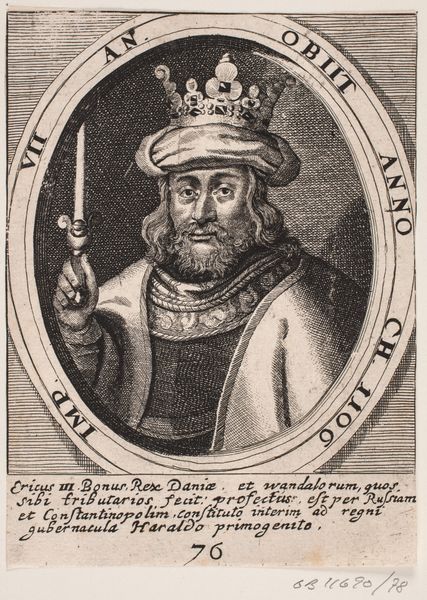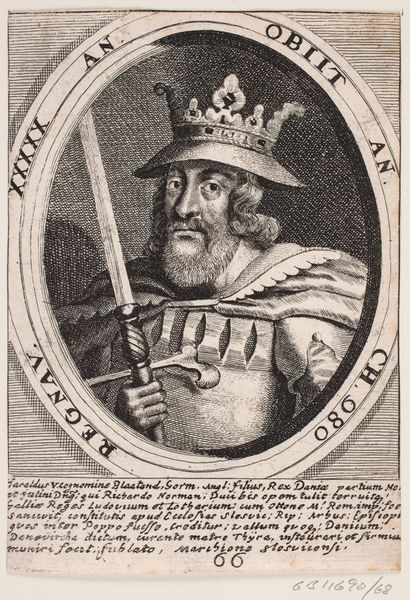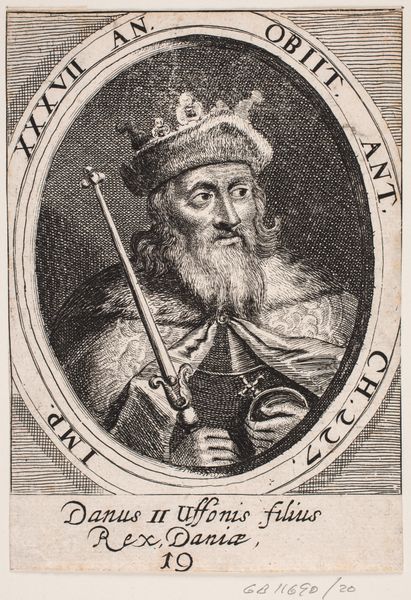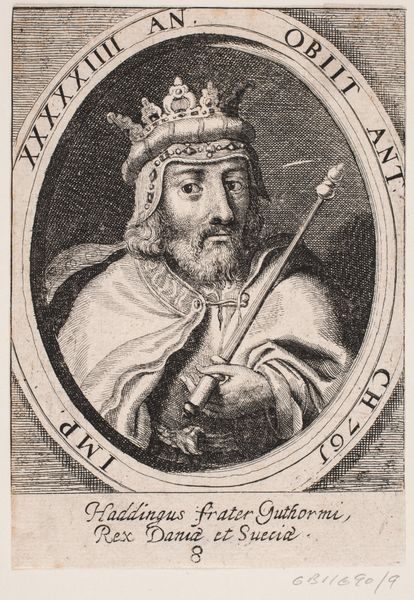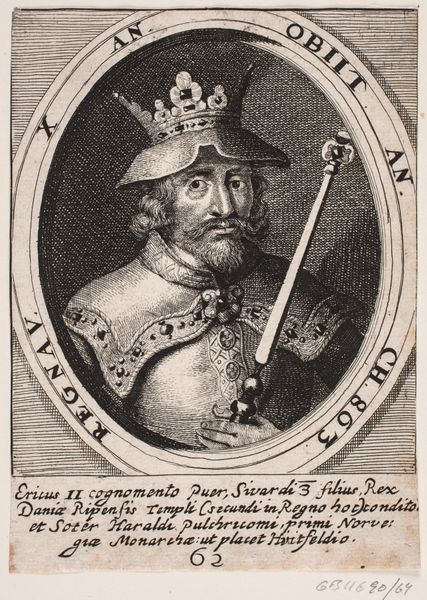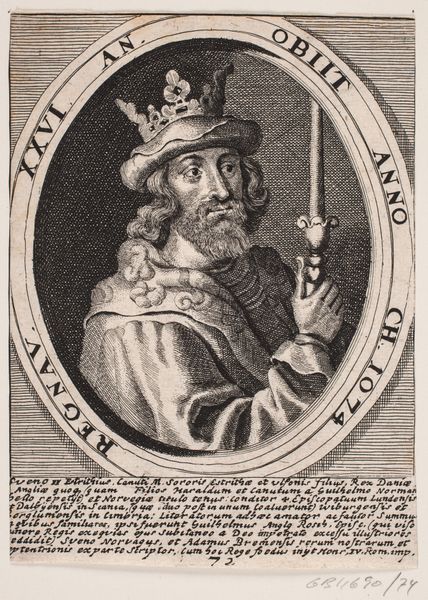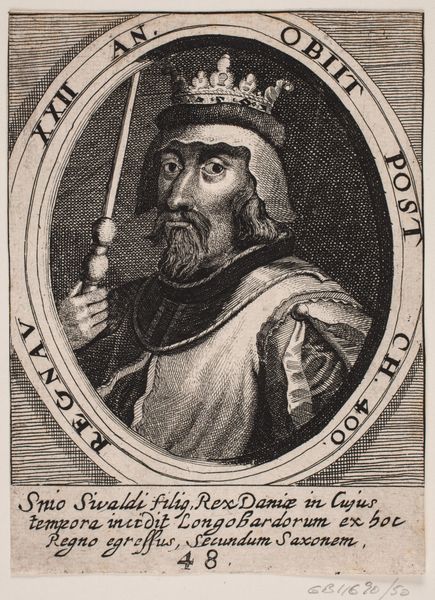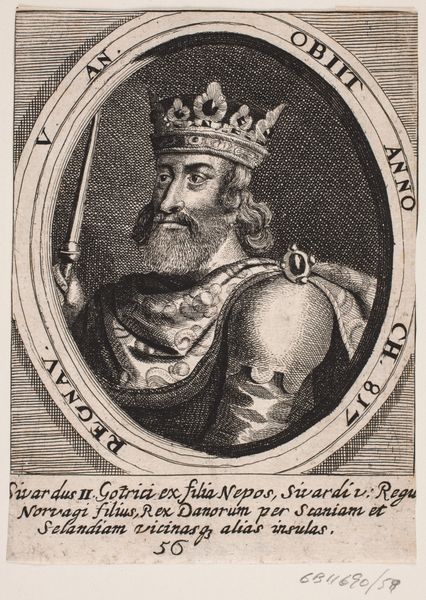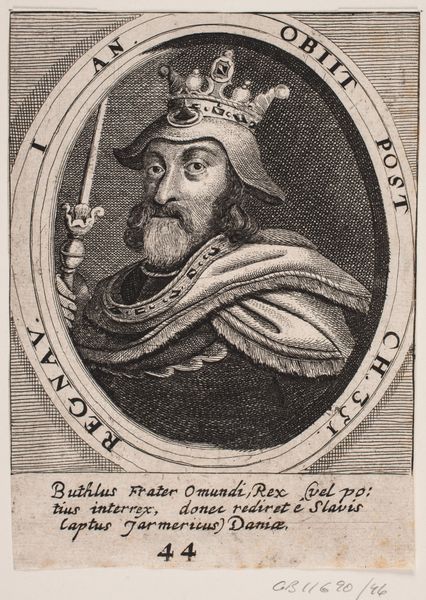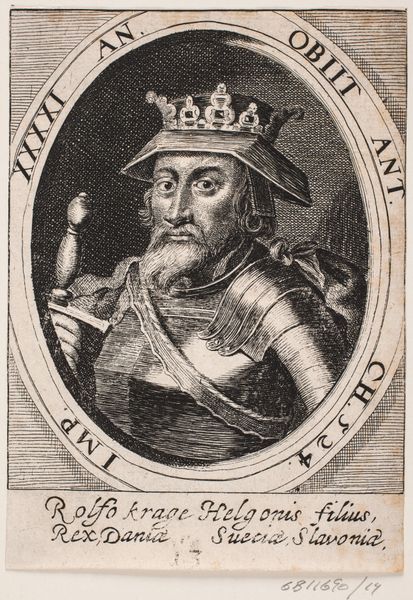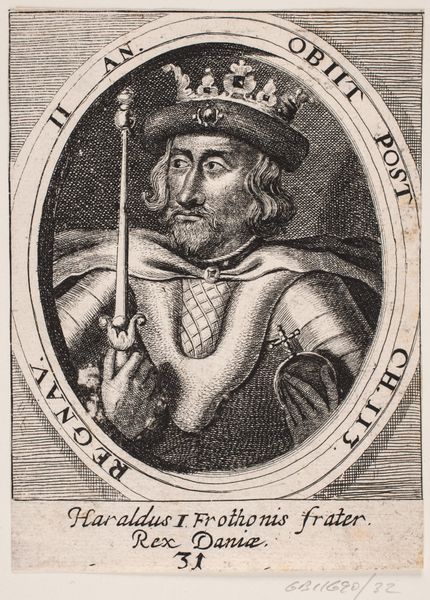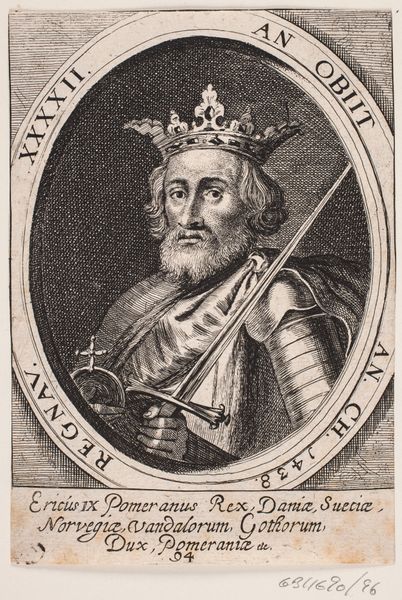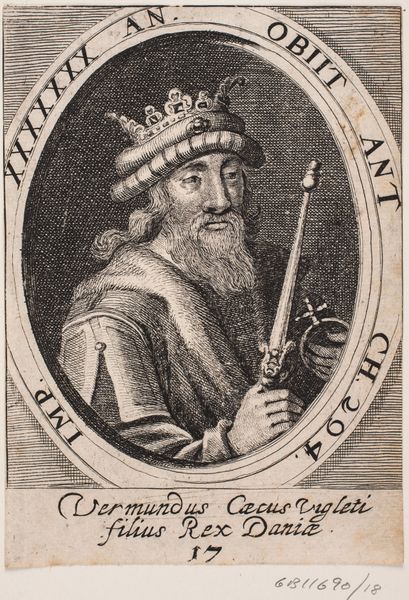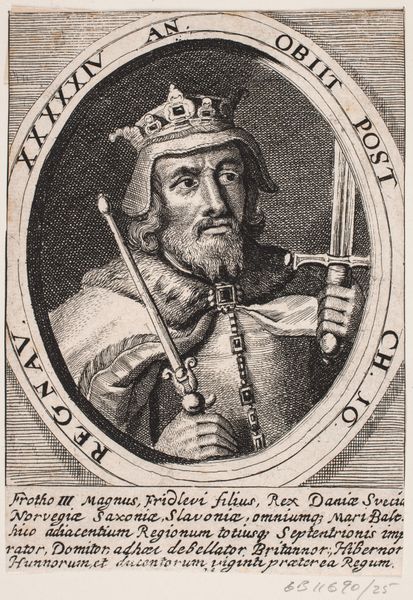
print, engraving
#
portrait
#
baroque
# print
#
engraving
Dimensions: 140 mm (height) x 100 mm (width) (bladmaal)
Editor: This is "Uffe den Spage," a 1646 engraving. I see the portrait of a regal man with a crown and scepter, but there’s also text surrounding the oval portrait, some of it in Latin. What historical context illuminates this piece for you? Curator: This print speaks volumes about the visual culture of early modern Europe and how rulers constructed their image. Prints like these circulated widely and played a key role in shaping public perceptions of power, authority, and even national identity. The Latin text locates him as a King of Denmark and Saxony. Editor: So, this wasn’t necessarily about capturing a true likeness, but constructing a political image? Curator: Exactly! Consider where this image might have been displayed: in books, public spaces, perhaps even private collections. Who was the intended audience, and what messages were they meant to receive about the power and legitimacy of the monarchy? The inclusion of Latin also signifies the importance of appealing to intellectual elites. Also, have you thought about what political situations might prompt the distribution of this portrait? Editor: That's a perspective I hadn't fully considered. I was focused on the artistic technique but knowing its historical context really highlights the political undertones. I'm curious to learn more about the purpose and social effects that prints such as these served. Curator: Think about how artists served political agendas. Reflecting on distribution can reveal how images shaped early-modern public life. I am glad you came to appreciate more on the role of an image.
Comments
No comments
Be the first to comment and join the conversation on the ultimate creative platform.
